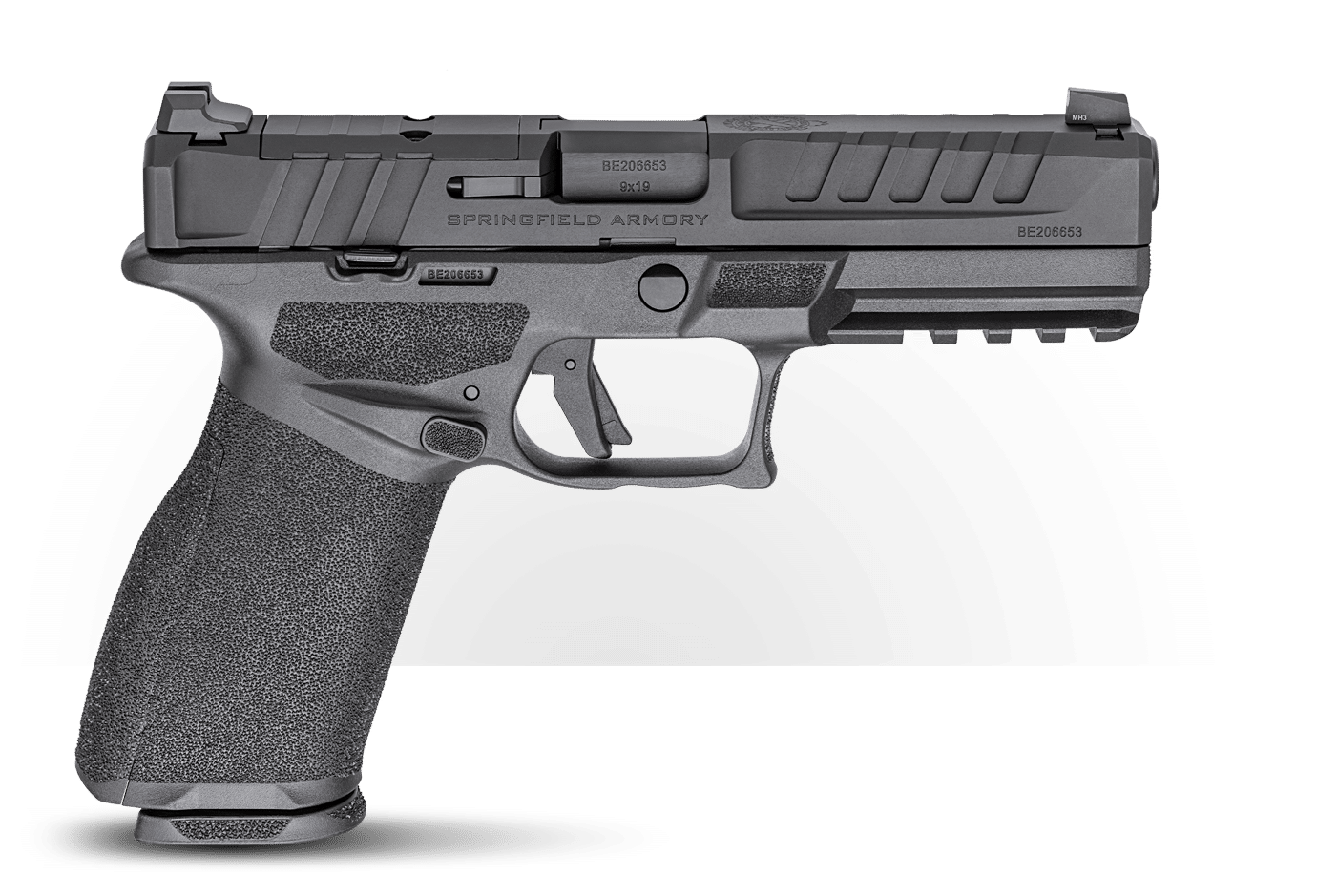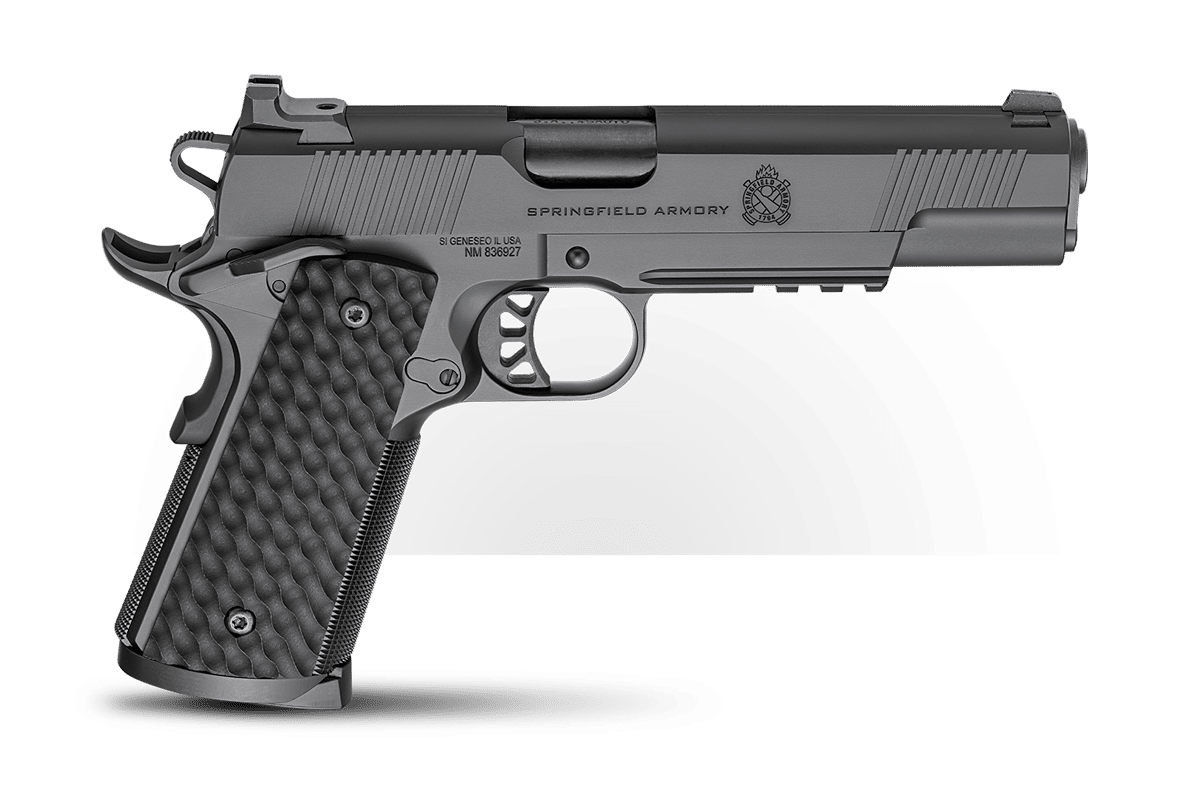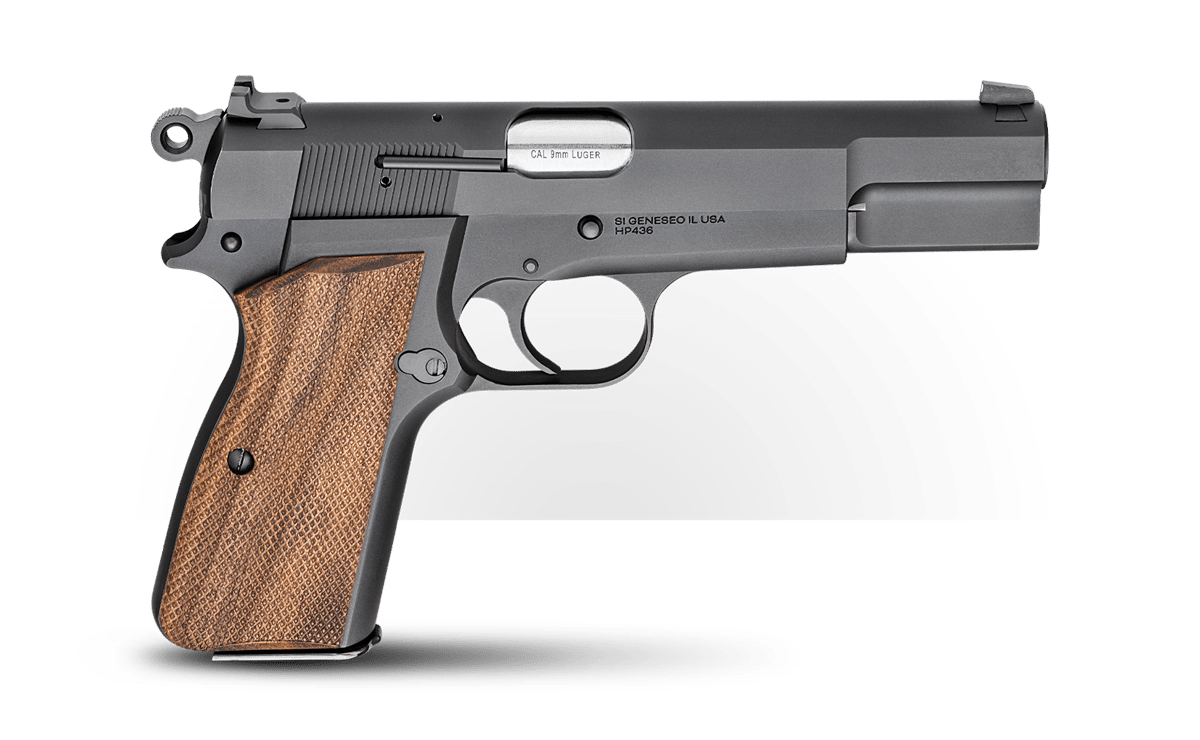As with all products, firearms evolve as new innovations and needs drive changes. Guns today look remarkably similar to those from 100 years ago, yet there have been major design changes due to improvements in available materials, manufacturing techniques and ever-changing end-user preferences.
One could reasonably say the receiver (or “frame”) was the traditional “backbone” of a handgun. It was called the receiver because it received all the other parts — trigger, sear, hammer, springs, safety, magazine catch, slide, barrel, etc. Everything needed to make the handgun function relied on the receiver, and that is the reason it is also the serialized part. The receiver was the foundation for all pistol designs. The 1911 uses a receiver. The SA-35 uses a receiver. You get the point.
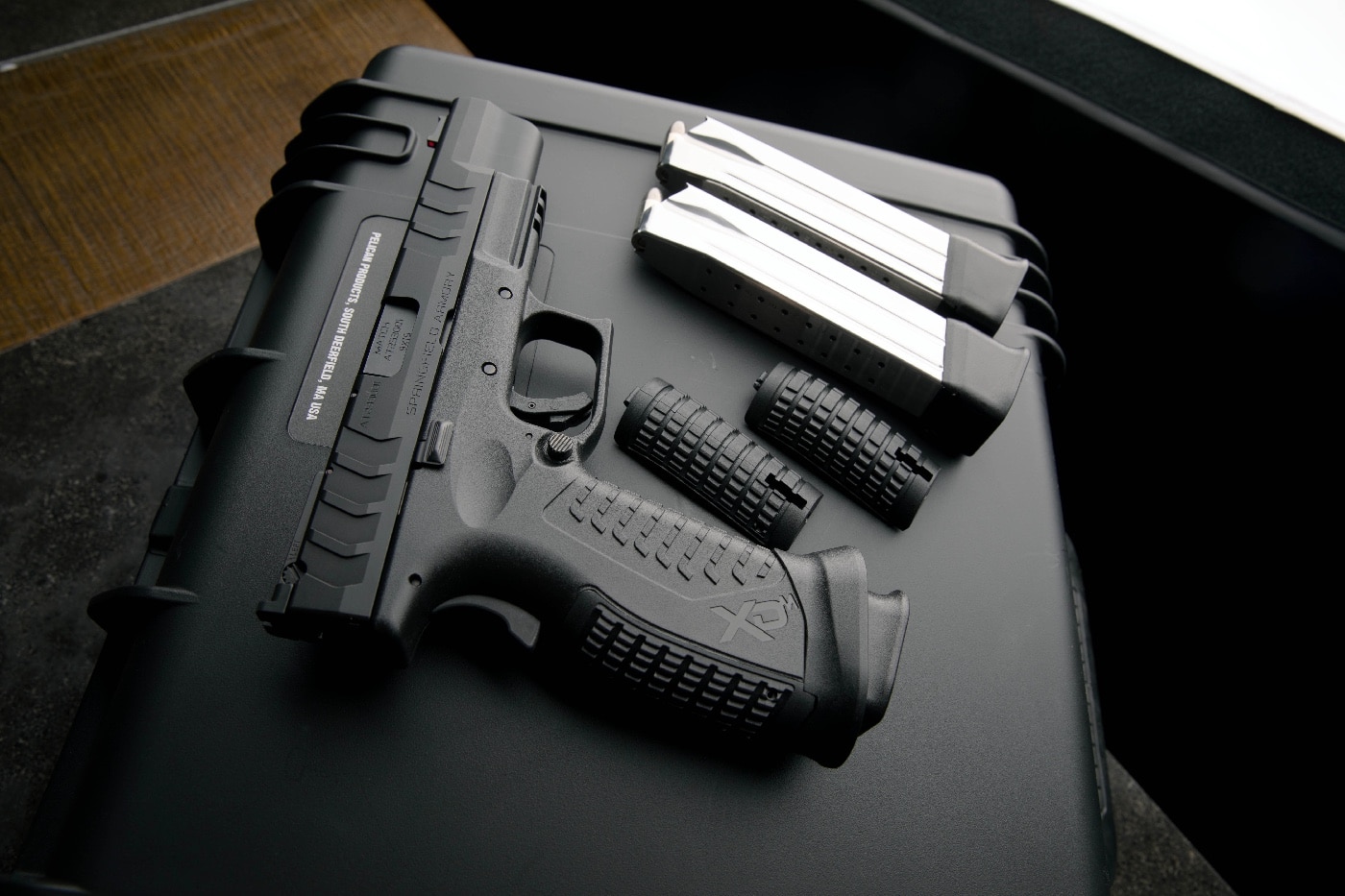
Like everything, though, pistol design evolves. In the case of the new Echelon pistol, what was once the “receiver” — and arguably the most important part of the handgun — has now become a grip module. In particular, the Echelon uses a Central Operating Group, which features a single self-contained component that operates the pistol.
Beyond the Wood and Steel Era
A few generations ago, practically all semi-automatic handguns used a steel receiver with hand-fitted parts. The build process back then was slow; early 1911 pistols required a lot of hand-fitting of parts to the receiver. Today, CNC machining helps reduce the hands-on work. Another milestone in pistol evolution was use of lighter, alloy receivers to hold all the parts together.
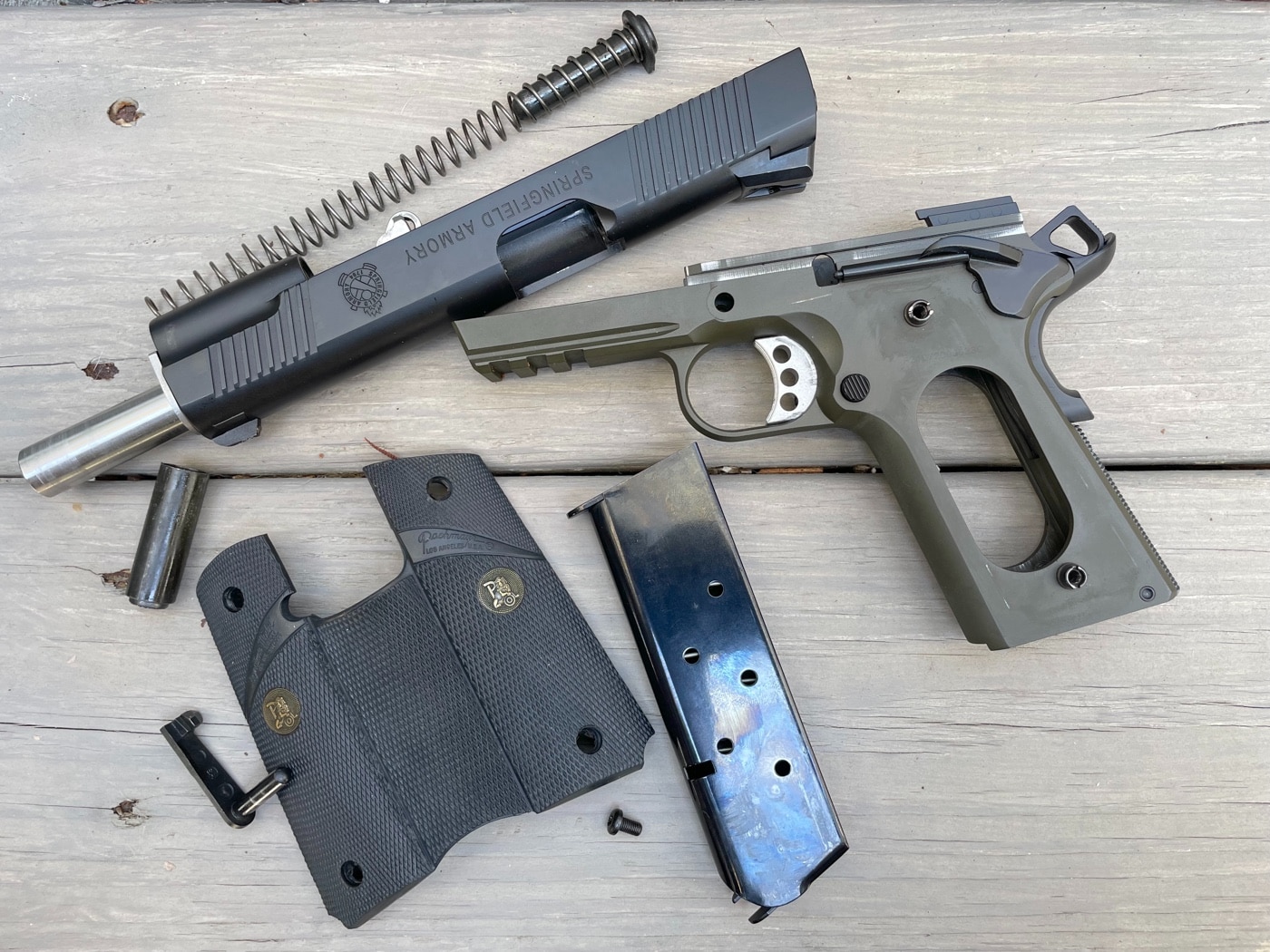
The early 1970s saw the introduction of the first polymer-frame handguns. While it was hard for steel and wood pistol traditionalists to embrace plastic guns, by the early 21st century nearly every handgun manufacturer was producing a polymer-frame, striker-fire pistol. Most of these pistols also incorporated modern safety devices like a trigger safety, which is a lever incorporated into the trigger.
In general, it was not felt there was a need for a traditional manual thumb safety like on the single-action 1911 or SA-35 pistols. New striker-fire trigger designs allow the user to simply press the trigger to disengage the safety and fire the pistol. Of course, manual thumb safeties were incorporated into many of these polymer-frame striker-fire designs as an option for those who prefer that system.
XD Marks the Spot
The XD semi-auto pistol is an excellent example of a pistol from the new generation of polymer-framed pistols. The move to use polymer meant the pistol was lighter, and modern manufacturing techniques made for designs that required far less hand fitting during assembly.
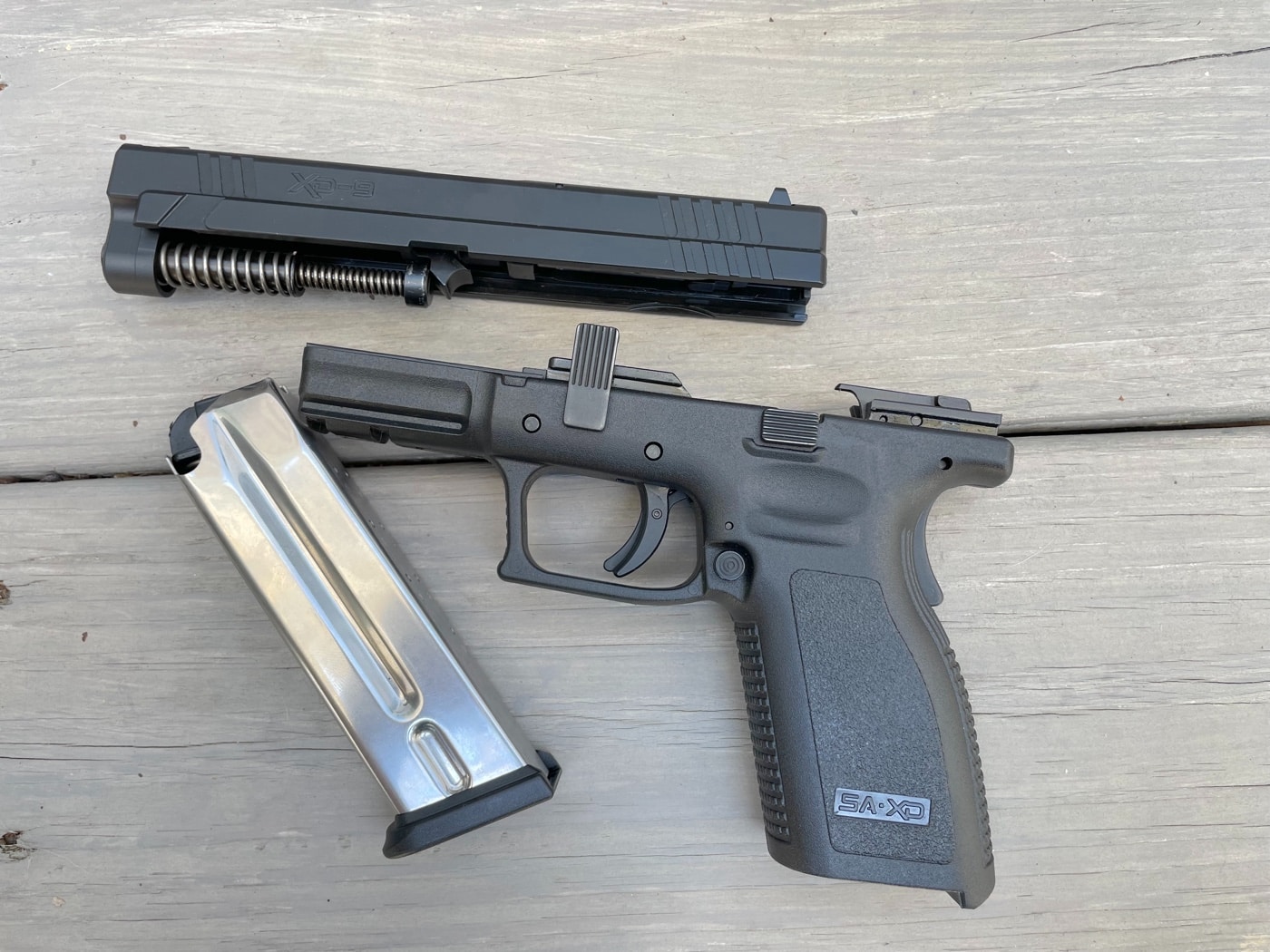
Polymer frame pistols also allowed “kitchen table” gunsmiths to reshape the grip on the frame for a more custom fit. I know a lot of you have taken a Dremel tool to the polymer frame of a pistol. Admit it. With a traditional steel pistol, changing the grip contour or shape was almost exclusively the work of a professional gunsmith.
As more polymer-frame pistols like the XD-M Elite have been introduced, backstrap modules in small, medium and large became standard equipment. These allowed shooters to adjust the frame fit for a more comfortable grip. With steel and wood, you usually needed to conform to the gun. With polymer guns, the pistol could conform to you.
A New Standard in Handgun Design
The Central Operating Group is the heart of the Springfield Echelon, much like the CPU of a computer. A small stainless steel chassis contains the trigger, trigger bar, sear, slide stop and all the other springs and pins needed. It is also the serialized part of the firearm. As a result, it can be easily swapped between grip modules without the use of screwdriver, hammer, punch and a litany of expletives.
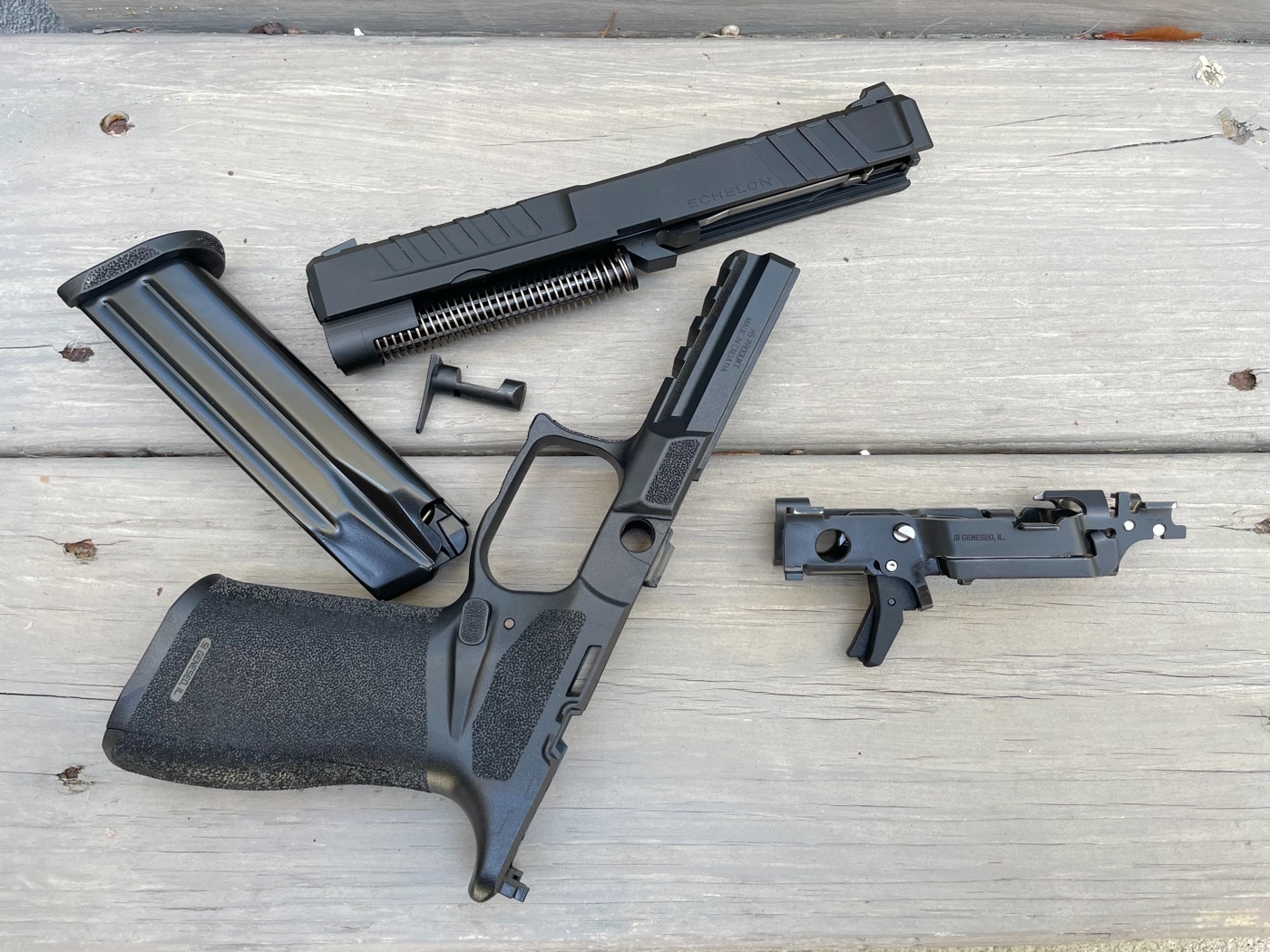
All of the typical safety features are contained in the Central Operating Group. The trigger blade is in place to deactivate the trigger safety on a full trigger press. A safety sear and striker block safety are built into the Central Operating Group, adding more layers of safety to the pistol.
The Echelon and Grip Modules
Due to the design of the Central Operating Group, the Echelon’s grip module can be modified and shaped to fit a wide range of hand sizes. The Echelon capitalizes on this feature and offers three sizes of grip modules: small, medium, and large.
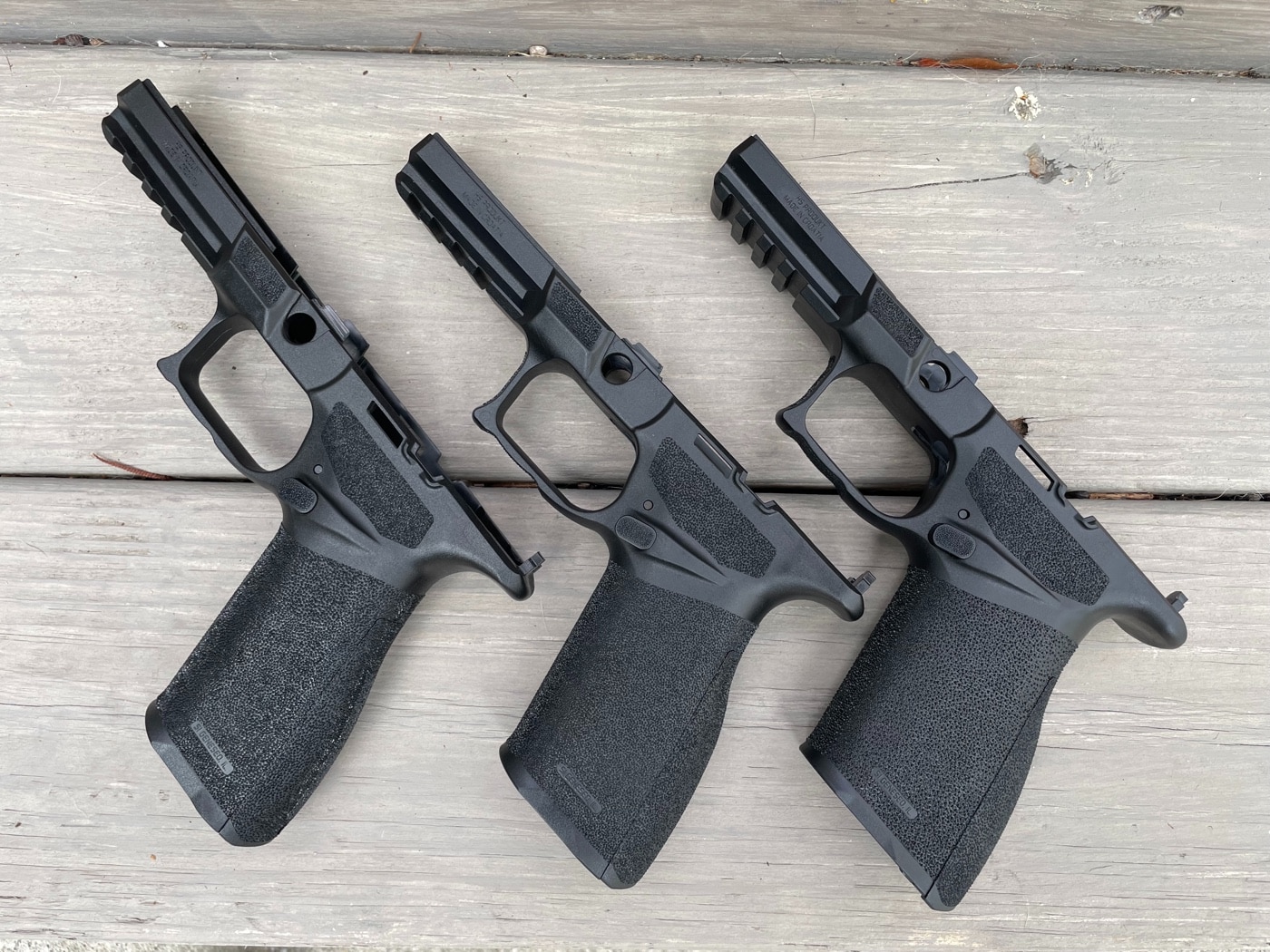
Echelon grip modules also feature modular backstraps in small, medium and large sizes. That gives the user nine different variations of grip dimensions. Stock Echelon handguns come with the medium-size grip module and medium backstrap installed.
The grip modules also provide a wide beavertail and offer a very low bore axis, which directly translates into less muzzle flip and more control. Adaptive Grip Texture (from the Hellcat) covers the grip modules and adheres without being abrasive.
You can tell what size grip module is on your gun by removing the backstrap. Under the backstop near the magazine well is a series of numbers and a letter, either S, M, or L. These letters correspond to the module size; S for small, and so on. Backstraps are also marked on the bottom edge with either an S, M, or L.
With the medium grip module and medium backstrap installed on the Echelon, I measure a trigger distance of 2.82”. Trigger distance is measured from the backstrap to the trigger face. The width of the grip measured from under the triggerguard to the backstrap comes out to 1.81” for me, and the thickness of the grip measures 1.19”. Typically, the trigger distance is the issue for shooters with small hands. For them, the trigger is too far forward to properly press the trigger backward. So instead, many shooters end up pushing the side of the trigger as they press back. Another common grip issue for small-handed shooters is that the grip is too thick so your shooting hand fingers don’t achieve a solid grasp.
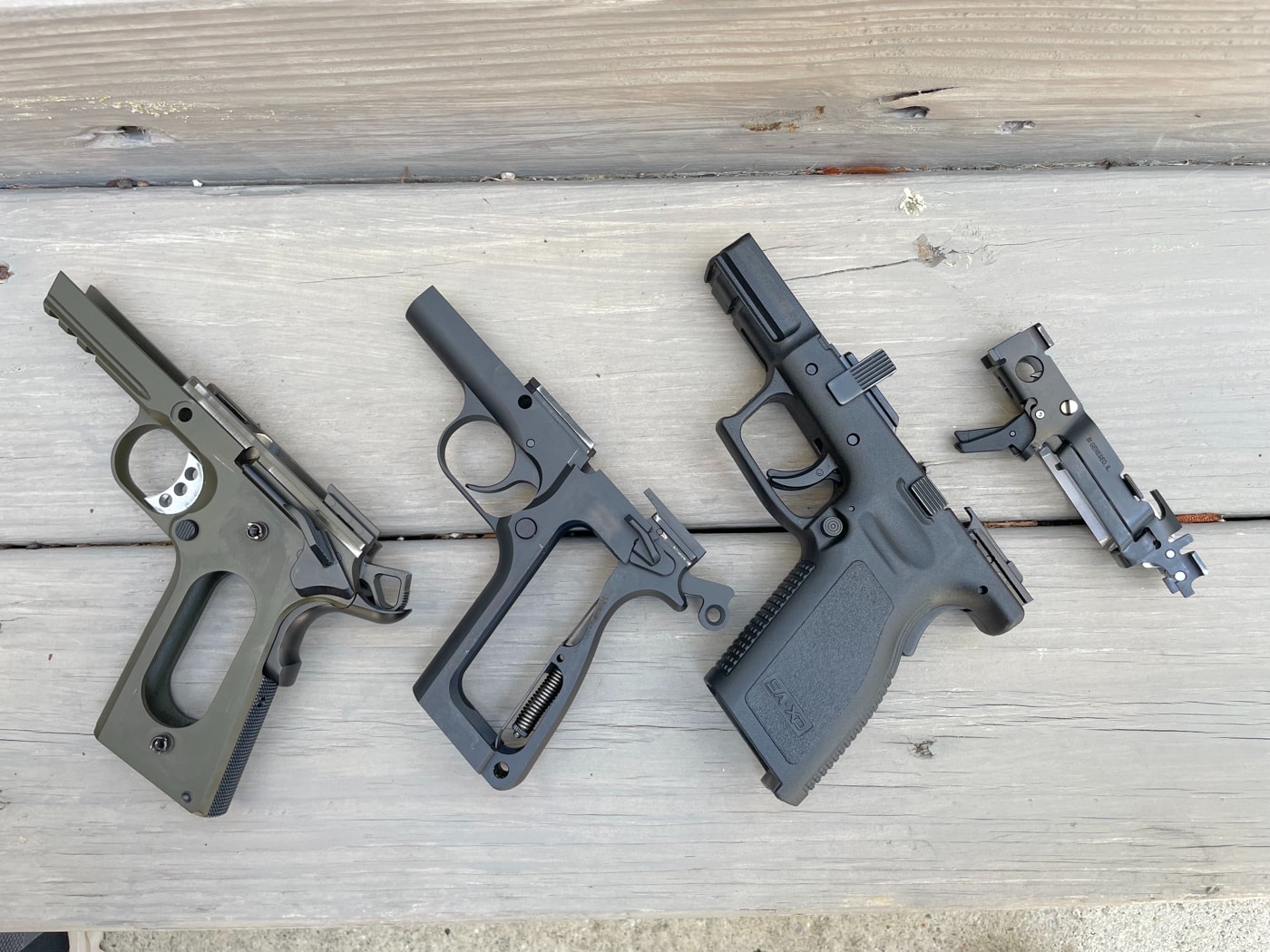
Switching to a small grip module and using the medium backstrap, the trigger distance is reduced to 2.74” by my measurements. The trigger distance with the large grip module and medium backstrap increases to 2.99”. As you can tell, there are a lot of options here.
How to Fit the Pistol to Your Hand
The first step in determining the proper grip size is to ensure you have a high hold on the gun and the web of your hand is tucked under the beavertail. This ensures a more natural point of aim.
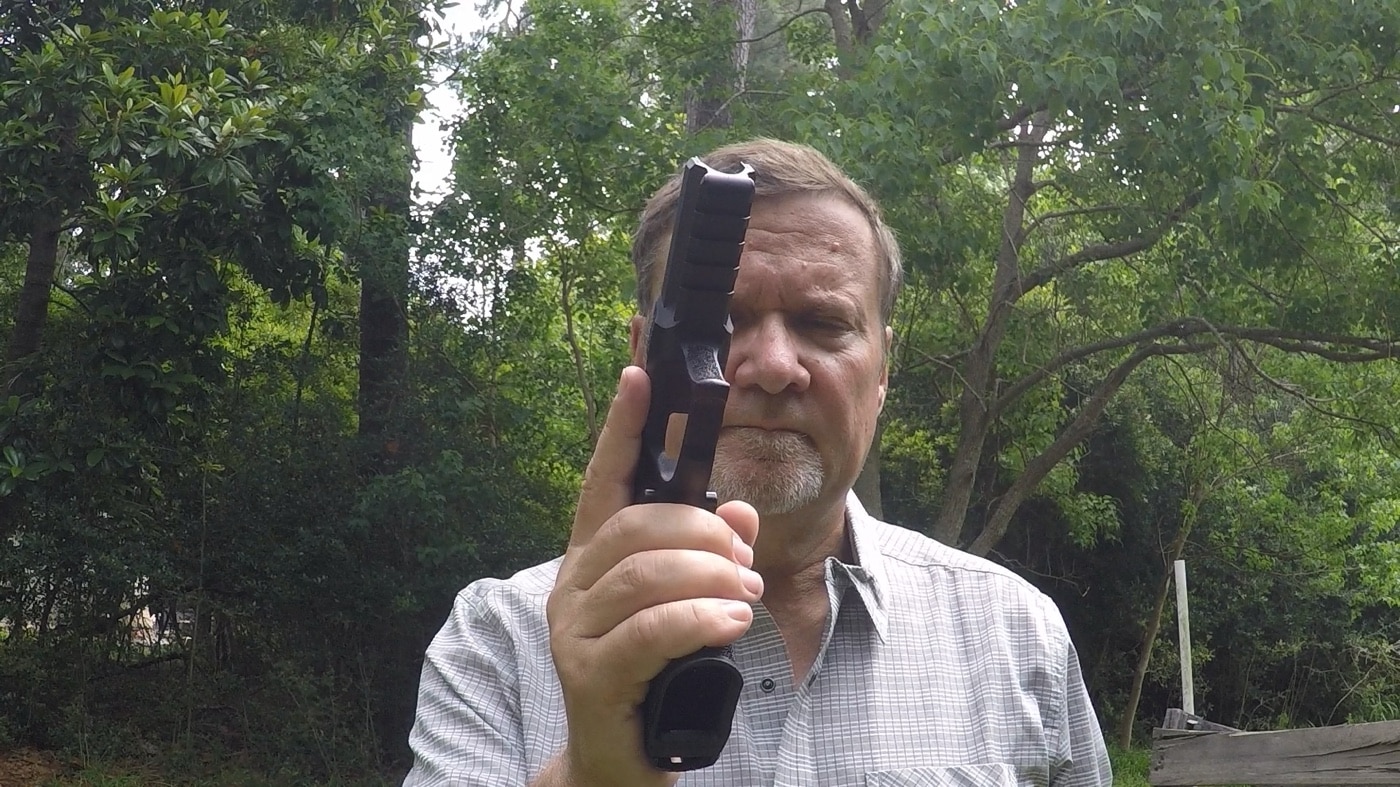
The next step is to see where the second set of knuckles of your shooting hand fall on the front grip strap. This is checking the circumference of the grip module. The second row of knuckles should generally fall in line with the front grip strap. If the first set of knuckles lines up with front grip strap, the grip module is too big. If the second row of knuckles wrap around the front grip strap, the module is too small.
The next step to see where your trigger finger naturally contacts the trigger. If you have to reach for the trigger or have too much finger through the triggerguard, your accuracy will be adversely impacted.
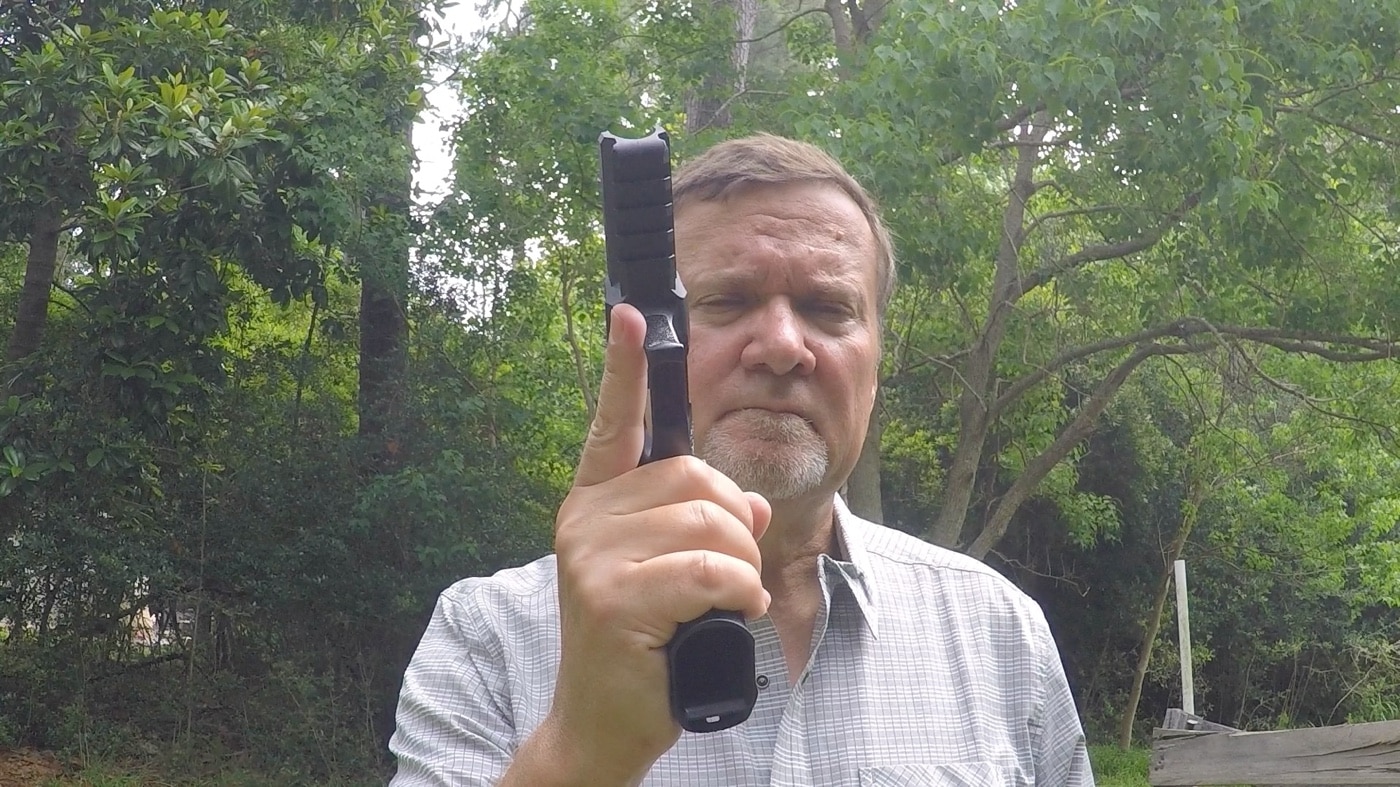
My initial fit turned out to be the medium frame and medium backstrap. I have an average-sized hand and wear medium-sized gloves. I swapped the Central Operating Group between the small and large grip modules at the range to verify and found my accuracy and comfort sweet spot was with the medium grip module. With a bit more shooting, I ultimately settled on the medium grip module with the small backstrap. It was nice to have the option to fine tune it all to this point.
Conclusion
The Springfield Armory Echelon represents a significant step forward in handgun evolution. In addition to its other groundbreaking features, the Central Operating Group is a significant step in allowing a shooter to easily fit a firearm to his needs.
Editor’s Note: Please be sure to check out The Armory Life Forum, where you can comment about our daily articles, as well as just talk guns and gear. Click the “Go To Forum Thread” link below to jump in and discuss this article and much more!
Join the Discussion
Featured in this article
Read the full article here



